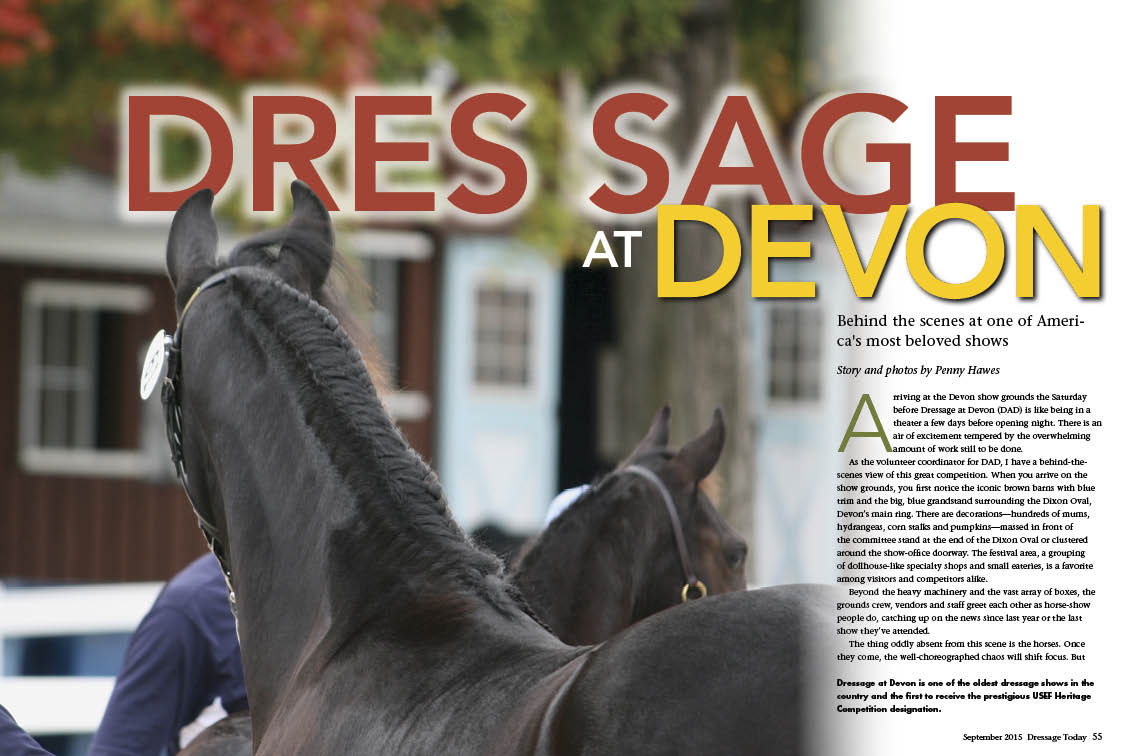In the late 90’s I was boarding at a small breeding farm in New Jersey. Several years in a row, the farm’s owner took a few youngsters to the breed show at Dressage at Devon (DAD) in Devon, Pennsylvania. I was lucky enough to tag along as an extra pair of hands. I remember the excitement we all felt as we readied the horses and trailers for the three-hour trek to the historic show grounds with the iconic blue barns. I’m lucky that today I still get to attend Devon, albeit in a different capacity. And I still get that giddy feeling as I pack for the ever-changing weather and anticipate seeing the beautiful horses, friendly people and fantastic shopping that make this show so unique.

If you’ve never had the chance to experience DAD, be sure to read all about it from the show’s volunteer coordinator, Penny Hawes. Penny offers us a behind-the-scenes look at how the event—now in its 40th year—operates and what makes DAD one of the nation’s most beloved shows. She says, “For most competitors, volunteers and spectators alike, there is something magical about DAD.” Read more on p. 54.
No stranger to the Devon show grounds is Felicitas von Neumann-Cosel, author of this month’s main training feature. In her story, “The Meaning of Dehnungshaltung,” Felicitas explains the German term to help make your horse more beautiful through self-carriage. She says, “With the ongoing debate about the right and wrong of the horse’s neck position during training, the German word Dehnungshaltung stays constantly in the back of my mind. There is no English translation, but essentially Dehnung means “stretch” and Haltung means “carriage.” These are the two most important elements in the way a horse uses his neck and body to find a proper connection.” To read more, turn to p. 26.
In this issue we introduce a new series called “Tips From Trainers Who Teach.” This monthly column will bring you easy-to-follow tips from well-respected, qualified trainers who are known as good teachers, including the new FEI Certified Instructors. Jeremy Steinberg, the USEF Youth Coach from 2010–2014, kicks off the series with “The ‘Library-Quiet’ Position.” He explains that when a rider doesn’t sit still or quietly, her aids become loud. He says that the best position is one that creates an environment like a library—quiet and peaceful. “If your position is ‘library quiet,’ your horse will always be able to hear what you are saying clearly and concisely.” Read more on p. 34.
There’s plenty more in this month’s issue, including a recap of the Pan American Games in Toronto (p. 46) and the NAJYRC in Lexington, Kentucky (p. 60). And if you do plan to attend DAD, be sure to stop by our booth and say hello.
Until next time …











